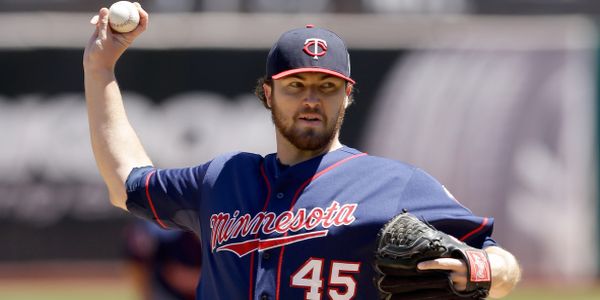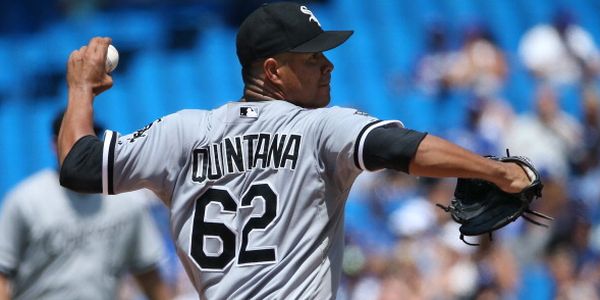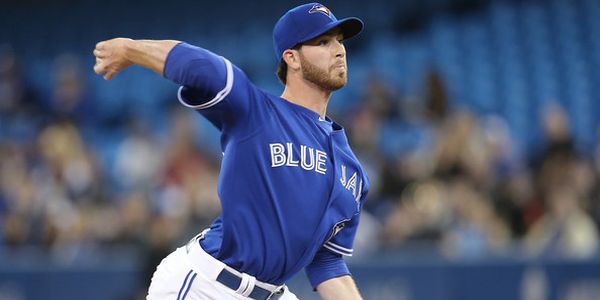2015 Fantasy Baseball Draft Guide: Starting Pitchers You Almost Have to Draft

I love FIP. Or at least I did until xFIP came along and improved the predictive power of defense-independent pitching statistics (DIPS). Because home run rates generally fluctuate from year to year, xFIP applies a league average home run rate to all pitchers, which makes xFIP better able to tell us what will happen in the future than FIP can. Admittedly, some pitchers do have the ability to maintain an above average home run rate and some are not able to bring their home run rate down to average. But for the most part, xFIP can tell us more about what will happen in the future.
But then Matt Swartz’s SIERA came along and upstaged xFIP. By giving more or less weight to some of the components of FIP/xFIP and by taking balls in play more into account, SIERA is able to be even more predictive than xFIP. Ever since Swartz came out with SIERA in 2011, that has been my go-to DIPS stat. But there’s a new sheriff in town, and his name is cFIP.
cFIP is a creation of Jonathan Judge that was unleashed on the world about a week ago. As you can see in Judge’s lengthy (but well worth it) introduction to the statistic, it’s a fairly complicated metric. At least the methodology and calculation of it is. In the simplest terms and with my limited understanding of the methodology, cFIP just takes a lot more factors into account. The ‘c’ in cFIP stands for context. Here’s a quote from Judge’s piece on the limitations of other DIPS statistics.
However, none of these metrics is able to consider the context of each underlying event. They don’t account for each batter the pitcher faced, the number of times the pitcher faced that batter over a season, the catcher to whom the pitcher threw, or the umpire behind the plate. They also don’t consider how each event was affected by the stadium in which it occurred, the handedness of the pitcher and the batter, or the effect of home-team advantage. Nor do they account for a pitcher throwing in a loaded division, as opposed to a pitcher running up his stats against lesser competition. This both limits their overall effectiveness and, in particular, their usefulness with smaller sample sizes.
The long and short of it is that cFIP takes all those things into account for each individual event.
What’s most important is that Judge found cFIP to be more predictive than any other stat like it and somewhat substantially so. If there’s one thing in the piece of which I sort of have a good understanding, it’s the methodology by which Judge tested the predictive power of cFIP, and it’s clear that cFIP will now be my go-to DIPS stat.
All that expository material aside, we should be looking at cFIP from last year to tell us which pitchers may be in store for better production this year. cFIP is on a scale of 100, meaning a pitcher with a cFIP of 100 is exactly league average. The further below 100 the better the pitcher is, and the further above 100 the worse the pitcher is. I would compare SIERA to ERA since they are on the same scale, but we’ll compare cFIP to ERA- since ERA- is also on a scale of 100.
The Aces
As Judge noted in the piece, the standard deviation for cFIP is 15. As Judge described it, anyone who is at least one standard deviation better than the mean with a cFIP of 85 or lower is ‘great,’ and anyone who is at least two standard deviations better than the mean with a cFIP of 70 or lower is ‘superb.’ Last year there were seven starters (min. 120 IP) with a cFIP of 70 or lower. Three of those seven had an ERA- of 70 or better as well (Clayton Kershaw, Chris Sale, Corey Kluber) and one of them was Yu Darvish. That leaves us with three starters who pitched like the elite of the elite last year but didn’t have the traditional roto ratios to go along with it. The idea is that these three guys could be in for big years.
Two of the three names are names you might expect to see here, Max Scherzer and David Price. They are going third and seventh among starters, respectively, and cFIP is telling us they belong that high in the pitcher ranks. Overall, both starters are going in the first three rounds of 12-team mixed leagues, and that’s earlier than I want to take a pitcher. But if you like to grab a stud pitcher early, Scherzer and Price are both worth it.
The other guy in this group is almost certainly someone you wouldn’t expect to see listed among the league’s elite, and he’s the one you almost have to draft. That would be one Phil Hughes. Hughes’ ERA- was eight percent better than league average last year at 92, but his cFIP was much, much better at 70, which was tied with Price for the sixth best mark in the league.
The driver of Hughes’ underlying success was his insane 1.9 percent walk rate. You’ve got to go back 10 years to Carlos Silva in 2005 to find another qualified starter with a walk rate under two percent. Hell, only five qualified starters have had a walk rate under three percent in the last decade. Hughes obviously isn’t going to be able to do that again just because basically no one can. But he should continue to have some of the best control among starters. His walk rate is low because no one has thrown more first pitch strikes or lived in the zone more than Hughes the last two years.
The reason that Hughes’ ERA didn’t live up to his cFIP was likely because of his .324 batting average on balls in play. Hughes bears some of the blame for his BABIP being so high because he gives up a healthy percentage of line drives. That has been the case for each of the last two years, but his career line drive rate is about two percentage points lower than what it has been the last two years. It makes some sense that Hughes is giving up more hard contact now that he’s throwing a much higher percentage of pitches in the zone. But Mike Podhorzer had Hughes’ expected BABIP at .302 last August when his BABIP sat at .344. Given that his BABIP finished the year 20 points lower than that less than two months later, it’s obvious Hughes benefited from some positive regression, and it would appear that there may be more positive regression coming.
Ultimately, Hughes isn’t going to be a top ten starting pitcher. No duh. But it’s very, very likely that he’s much better than the 47th starting pitcher, which is where he’s being drafted among starters. I’ll be surprised if I leave a draft without Hughes on my team.
The Mid-Round Values
Among the pitchers with an ADP between 25 and 50 among starters, which is basically SP3/SP4 territory in 12-team mixed leagues, there are a couple of pitchers whose cFIP was noticeably lower than their ERA- last year and whose rank in cFIP is much better than what their ADP is.
The first is a guy I’ve written about before, Hyun-Jin Ryu. Ryan Noonan also discussed Ryu around these parts recently. With a cFIP of 87, Ryu had the 21st best cFIP last year, and it was a fair bit better than his ERA- of 96. With an ADP of 31 among starters, Ryu appears to be an SP2 that you can have for an SP3 price.
The thing I love most about Ryu, which I covered in the previously linked post, is his lack of a platoon split. Platoon splits can be a bigger problem for left-handed starters since a majority of batters are right-handed. But Ryu has actually been better against right-handers in his two years in the league. He has held right-handed hitters to a .285 wOBA compared to a league average wOBA of .310. He’s good.
The other guy you probably have to draft in this range is a guy I’ve loved in years past, Anibal Sanchez. I honestly hadn’t given Sanchez much thought this year until doing this little exercise, but he looks to be an even bigger value than Ryu. Sanchez’s cFIP was 84 last year, three percent better than Ryu’s, yet Sanchez has an ADP of 37, six spots below Ryu.
The concerns with Sanchez are health, given that he only threw 126 innings last year, and a big drop in his strikeout rate last year. But Sanchez’s big strikeout rate in 2013 was in part due to a boost in fastball velocity, which Sanchez somewhat maintained last year. It’s possible he gets some of the strikeout rate back next year and couples it once again with his well above average ability to keep balls in the park. Health could derail Sanchez’s value, but the upside is pretty significant.
The Sleepers
I mentioned earlier that I don’t like to take pitching early and the guys I’m about to mention are why. I can fill out the back half of my fantasy rotation late in drafts with guys like this who can easily perform like SP4s and even SP3s if everything goes right. A rotation filled with SP2 through SP4 types and a loaded lineup is a better way to build a team than paying up for stud pitchers and losing out on the top hitters.
In the interest of keeping this post from being extremely long, I’m simply going to give you the four guys that look like sleepers according to cFIP. All four guys had a cFIP of 91 or 92 last year, which ranked in the 30-35 range among starters. All four have an ADP of 55 or higher among starters, which means they’re generally going outside the top 200 overall.
| Name | cFIP | ERA- | SP ADP |
|---|---|---|---|
| Jake Odorizzi | 92 | 114 | 57 |
| Scott Kazmir | 91 | 95 | 59 |
| Brandon McCarthy | 91 | 105 | 65 |
| Drew Hutchison | 92 | 114 | 74 |



